Login or Subscribe
You must be logged in to access this content
Subscribe for free access to Japanese Exotic Mushroom Journal and gain insider knowledge on effective cultivation methods for Japanese mushroom species. Elevate your skills with expert tips and innovative technologies to master the art of growing Japanese exotic mushrooms.
◆ Discover exclusive Japanese mushroom cultivation techniques
◆ Learn innovative methods to enhance mushroom quality and yield
◆ Tap into Japan's rich heritage for unique growing insights
◆ Discover exclusive Japanese mushroom cultivation techniques
◆ Learn innovative methods to enhance mushroom quality and yield
◆ Tap into Japan's rich heritage for unique growing insights
Subscribe Now for Free Login
Meet the Growers
Every now and then there is a rare case where we find more American farmers growing a certain variety of mushroom than in Japan. Oyster mushrooms, which have almost no market share in Japan, and what tiny share they do have are black or yellow oyster mushrooms, are one very big example that I have touched upon before. Another example came to my attention in late 2023: Pholiota adiposa. There is a unique market quirk here. In Europe, Pholiota nameko are one of the staple specialty mushroom varieties, which are used in mixed mushroom packs both for their pretty coloration and exoticism.Dream Mush and a look at chestnut mushroom cultivation in Japan
Especially in Western Europe, nameko are a very common specialty mushroom variety. In the U.S. however, Americans are repulsed by nameko’s viscous, okra-like sliminess. There are not that many people growing nameko regularly in the United States. Instead, a lot of Americans are doing a pretty steady trade in chestnut mushrooms, i.e. Pholiota adiposa, which one farmer described to me as a not-slimy nameko. This species, called numerisugi-take in Japan, is more of a wild-foraged mushroom here. Other than a handful of farms growing them with actual inoculated tree logs outdoors, there is only one farm in Japan that grows chestnut mushrooms year-round with an automated indoor climate-controlled farm. Even they, unlike in North America, are growing it in bottles, not on blocks.Artificially cultivated chestnut mushrooms have a few key differences to their nameko counterparts. Longer stems. Larger average cap sizes. And a cleaner coloration with notably clear white flecks set against a creamy golden-brown exterior. Chestnut mushrooms have a nice nutty, earthy flavor, which is great with dishes that are already rich and flavorful. They also have a bit less of a slimy texture than nameko, and the fruiting bodies of the mushrooms are a bit crisper and chewier after cooking than nameko.- The one Japanese farm growing chestnut mushrooms commercially at scale, however, is in Oki Town, a small municipality in the southwestern end of Fukuoka Prefecture that is half rural farming community, half exurban bedroom town for Fukuoka City to the north. Japan is not a big country, but it is a very long country, made of four major islands, starting with Hokkaido in the north, then the biggest island, Honshu in the middle, the smallest of the four islands, Shikoku, located just beneath the mid-section of Japan, and then Kyushu, the southernmost of the main islands. Fukuoka is located in the north of Kyushu. All told this is over 650 miles (1000 kilometers) away from our offices here in Nagano Prefecture.The distance made that farm, a company called Dream Mush, not the kind of place I could make an easy swing by whenever I had an open day in my work schedule. Luckily, I received an introduction from the KinokoMeister Association, an NPO that works to promote Japan’s mushroom industry and certify “mushroom experts.” Since I was going all the way down to Kyushu, I arranged visits to two major producers in the region, and made preparations for a mini-tour of Kyushu. (The other stop, Unzen Kinoko Honpo, I have already written about in the2024 summer edition.) As I had learned when I visited Kato Enoki in summer of 2022, Kyushu, with its hot humid climate and short, mild winters, often does mushrooms a little different than here in mountains of central Japan.The same company representative who I had planned the visit with via email, came to greet us at the door. Hiromatsu Kenshin, (written in Japanese order with last name first) our guide, was tall, thin, and cheerful, in his late 40s but much more youthful in appearance. Mr. Hiromatsu sat down with us and, after sharing several pamphlets, gave us an outline of the business. Everything was going normally for about fifteen minutes, until, through some phrase or comment he made, I suddenly realized that Mr. Hiromatsu was the managing director and part owner of the company! I had to double check the business card I had received to confirm.I’d exchanged a number of emails with him, all of which were signed simply as ~Hiromatsu Kenshin, without any designation of his official position, but given his relative youth and laid-back open attitude, I thought he must be a sales manager or marketing director of some kind. I think he enjoyed the reaction he got from us, and soon explained that he’d started the business, and taken out a million dollars in loans, at age 24, along with three other friends of his from the region, two of whom were still involved in the business. It was a shock to hear of a young Japanese person who would (or even could) go a million dollars in debt to start a big new venture. Much less in the mushroom business, which is very tough in Japan and has been for a long time.I didn’t have too many preconceptions before going into Dream Mush. I prefer not to research the companies I visit too deeply beforehand so that I approach everything fresh. Those few impressions that remain clear afterwards always offer clues to said businesses’ strong points. Thus, I like to do most of my research after visiting the farm. This time, the only thing I knew was that the company was the only one commercially growing chestnut mushrooms in Japan through artificial cultivation techniques at any kind of scale, and I knew that they used bottle systems, but that was about it.We arrived at Dream Mush, on the kind of warm, sunny mid-March Friday that Japanese people would expect from Kyushu. The day was too clear, and the weather too beautiful, that it felt more like a vacation stop than work. After a fifteen-minute drive from the hotel, we found the entrance to Dream Mush’s factory without any trouble, but I was quite surprised because it was substantially bigger than the small, local producer I’d been envisioning. The parking lot was comparable to that of an American supermarket, and the building was also quite new and large enough to fit at least a half dozen basketball courts in.Mr. Hiromatsu explained the series of events, including his brief stint working for a big company (in an attempt to get out of Kyushu, which failed hilariously when his first job posting was not the company’s Tokyo Headquarters, but a satellite office in Kagoshima City, at the very bottom of Kyushu!), that led him to stake his life on a big new venture.He’d come back to his hometown of Oki Town after a few years in corporate life. His family had been farmers for many generations, but he had grown up hearing about and seeing the repeated boom-bust cycle of Japan’s farmers and was at first determined to avoid the sector altogether.His family had originally grown igusa, a plant known in English as soft rush, which is used to make tatami mats. In his grandfather’s time and his father’s youth, igusa was one of the major crops of the region and his family were igusa farmers. It was apparently very profitable, and between that and the rich farmland and bountiful crops of wheat and rice, the Chikugo plains were long famous as one of the wealthiest and most prosperous agricultural regions of Japan.
- Then igusa was rapidly outsourced to China and other Southeast Asian countries and the prices fell to the point where there was almost no profit in the crop. At the same time, the demand crashed as much of Japan quit using tatami mats for flooring. That led to farmers in the area switching over to asparagus, and the region was one of the first in Japan to grow asparagus. That led to an asparagus boom, only then Japan started importing foreign-grown asparagus at cheaper prices too and the price of asparagus also collapsed.Nowadays, the area’s big cash crop is strawberries, which foreign countries don’t bother or can’t grow like the Japanese do_emdash_in greenhouses with drip irrigation systems, lots of hand-pruning and immense labor and care to produce big, perfectly shaped and consistent-sized, ruby red strawberries that are sweeter, more flavorful, and more expensive than any strawberries any Westerner reading this has ever eaten before.
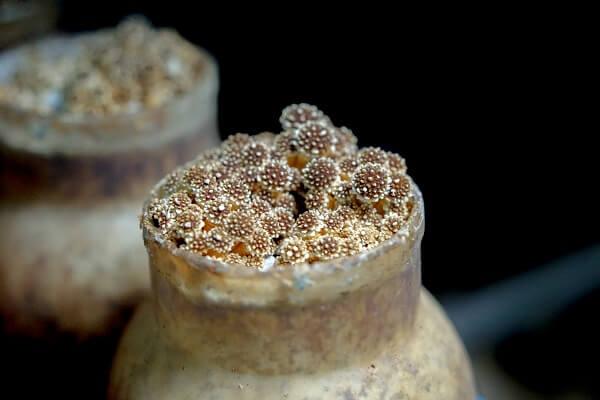
- Nowadays, the area’s big cash crop is strawberries, which foreign countries don’t bother or can’t grow like the Japanese do_emdash_in greenhouses with drip irrigation systems, lots of hand-pruning and immense labor and care to produce big, perfectly shaped and consistent-sized, ruby red strawberries that are sweeter, more flavorful, and probably more expensive than any strawberries any Westerner reading this has ever eaten before. The Chikugo plains are also one of the major wheat producing regions in Japan. The area nearby the factory we first visited in Chikugo City, Oki Town, where the company’s main factory is, is famous for being the biggest mushroom producing region in Kyushu.Mr. Hiromatsu’s first encounter with the mushroom business, though, didn’t come from friends or family, but from an initiative from mushroom producers in Oki Town to recruit and train people in their 20s in order to attract young blood to the mushroom business. The intention was to help support new local business run by young people. The course included not just help in business modeling and planning, but extensive training on mushroom farming, in this case, shimeji, including in spawn management, inoculation, incubation, and fruiting. He took the course, and was, he admits, hooked on the idea and soon managed to pull in three friends and acquaintances around the same age, and jumped into the business.
I learned that shimeji has always been their main product, but that chestnut mushrooms have been a valuable secondary crop since they started the business. This was 25 years ago, and shimeji were still a booming sector in the mushroom business and on the whole mushroom production and consumption were rising in Japan without issue. Prices were still decent for the variety, and because shimeji were being grown using a ground corn cob and soy pulp substrate (with a few other nutrition supplements), and used highly labor efficient and productive bottle cultivation systems, it was possible to make a major new investment in the business, even as a newcomer, and succeed. It helped that, as Mr. Hiromatsu said, he quickly became very good at growing mushrooms.My impression of the managing director was that he wasn’t just good at the technical processes and forward thinking (flexible enough, for instance, to use pattern recognition software to search for potential improvements to the growing method that humans didn’t make connections to). He seemed remarkably good at all aspects of the business, as at ease in discussing the price strategies and marketing techniques he uses for chestnut mushrooms as a special gourmet variety as he is at talking about spawn breeding and maximizing cultivation efficiency. Mr. Hiromatsu has the kind of charisma and all-around smarts and energy that are, to offer a blunt assessment, often lacking in the Japanese mushroom industry, particularly among mid-sized producers.Again, however, that was played against a very disarming and approachable character that made it easy to talk with him and almost forget we were dealing with the managing director and part-owner of the whole company. An owner who doesn’t even make note of this in his email signatures, and who took a genuine interest in what we were doing with our magazine to promote the Japanese system of mushroom farming internationally, and, more importantly, understood the need the industry has to promote itself. He agreed that the Japanese industry is somewhat miraculous, in that it produces extremely high quality and consistent mushrooms with high food safety standards at an extremely affordable price point, but that this is often lost on contemporary Japanese consumers.To the contrary, while I am usually the one asking all the questions, Mr. Hiromatsu came with many for me. What did the mushroom business look like in North America and Europe these days? What was popular with consumers there? How were they eating mushrooms? Where were they buying mushrooms from? Was it still mostly an Agaricus bisporus-based business in Western countries or were there a lot of farmers using Japanese or Chinese systems now? He had a number of questions for me, and we went back and forth both answering each other’s questions and looping back to our shared points of interest.This kind of introductory chitchat is always very fun. It gives me a good sense for what kind of company I’m dealing with before I’ve even seen anything. The longer the interview session and the friendlier the host is_emdash_especially when the host is one of the top figures_emdash_the better it speaks to a well-run company. Having a good idea for the big picture philosophy of a farm is very useful before you then go in and see what’s being done, because then it often becomes obvious why certain choices are being made.In Dream Mush’s case, to focus not on the bigger side of their business, shimeji, but stick with chestnut mushrooms, I heard a very common story. A private-public partnership working to further develop the mushroom industry in region originally discovered and patented a good strain of Pholiota adiposa that works decently with bottle cultivation systems. Dream Mush began cultivating chestnut mushrooms when they opened up their growing facilities in 1999, and on the basis of initial growth, made substantial investments to further expand their capabilities. What happened next is a tediously familiar story to me. 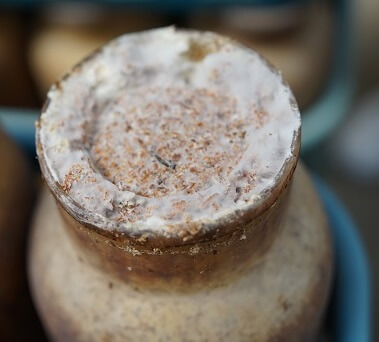
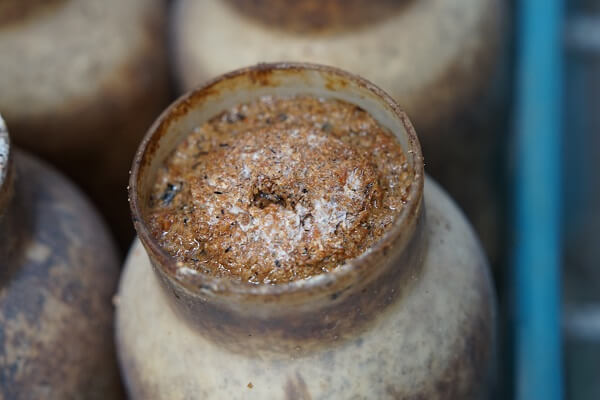 Above are a before and after of picture of an inoculated bottle of chestnut mushroom mycelia. This shows the process of "kinkaki" or, "fungal scraping" by which growers both provide an appropriate shock to trigger fruiting body formation and also scrap away older, harder mycelium (including remnants of the spawn) to ensure even pinning.Chestnut mushrooms hit the market with a very good evaluation in terms of flavor and texture. The price was also quite good, which made the variety a good hedge to diversify production. The company, like most companies in Japan, relied on third party wholesalers, mainly regional agricultural co-ops, to sell its chestnut mushrooms in the beginning. The first few years, prices were good and relatively stable. Then, over the course of just two years, prices dropped from the 80~100-yen range per 80-gram (roughly 2.8 ounces) unit that they had been at, to hovering between 25~50 yen per unit.Mr. Hiromatsu was very frank that he’s not interested in charging consumers a fortune far beyond his production costs, but that the prices offered to the company from wholesalers starting about 4 years in and to the present day, were just not feasible to run a business on. His was a young company with loans for equipment to pay off. Unlike shimeji, chestnut mushrooms have a relatively small yield per bottle, meaning they have low bioefficiency, on top of being a finnicky and tricky mushroom to grow with bottle systems. The lower end of wholesaler prices were downright cruel; the prices offered didn’t even cover immediate operating costs for production, much less loan payments for facilities and equipment.So, there he was, 28 and with substantial debt tied into facilities and equipment that the main traditional sales outlets for mushroom farmers, wouldn’t or couldn’t offer a sustainable price for. That led him to make the frank decision to overhaul the company’s strategy as he shifted the focus to selling its own product B2B, targeting large-scale commercial clients who buy in bulk and often with set, stable volumes. Now, the company sells nearly 90% of its product directly, outside of regional wholesalers and agricultural co-ops, though it tries to maintain a good relationship throughout the business and still occasionally relies on such third-parties to off-load excess stock.Dream Mush has focused on individual quick freezing as a way to preserve mushrooms without compromising quality or taste, and a lot of its B2B business deals in cut and frozen shimeji and chestnut mushrooms. Chestnut mushrooms in particular, the company rarely if ever sells to supermarkets, partially because of wholesaler politics and partially because they would rather keep the variety relatively rare for marketing value. Mr. Hiromatsu even rebranded the mushroom, selling their in-house chestnut mushrooms as Hakata sugitake (lit. Hakata cedar mushrooms).The name borrows from a historic name of the region, which is also a DOP for high-end wagyu beef and has cachet nationally for its connection to ramen and Fukuoka City’s reputation for delicious food. I also found it to be much less of a mouthful than “numerisugi-take.” The branded name rolls off the tongue a little sharper and instantly calls to mind the elite quality of other regional brands. The company leans heavy in the rarity and novelty, which make their Hakata sugitake a popular choice for restaurants and chains doing seasonal or limited time promotion menus to highlight unique ingredients.
Above are a before and after of picture of an inoculated bottle of chestnut mushroom mycelia. This shows the process of "kinkaki" or, "fungal scraping" by which growers both provide an appropriate shock to trigger fruiting body formation and also scrap away older, harder mycelium (including remnants of the spawn) to ensure even pinning.Chestnut mushrooms hit the market with a very good evaluation in terms of flavor and texture. The price was also quite good, which made the variety a good hedge to diversify production. The company, like most companies in Japan, relied on third party wholesalers, mainly regional agricultural co-ops, to sell its chestnut mushrooms in the beginning. The first few years, prices were good and relatively stable. Then, over the course of just two years, prices dropped from the 80~100-yen range per 80-gram (roughly 2.8 ounces) unit that they had been at, to hovering between 25~50 yen per unit.Mr. Hiromatsu was very frank that he’s not interested in charging consumers a fortune far beyond his production costs, but that the prices offered to the company from wholesalers starting about 4 years in and to the present day, were just not feasible to run a business on. His was a young company with loans for equipment to pay off. Unlike shimeji, chestnut mushrooms have a relatively small yield per bottle, meaning they have low bioefficiency, on top of being a finnicky and tricky mushroom to grow with bottle systems. The lower end of wholesaler prices were downright cruel; the prices offered didn’t even cover immediate operating costs for production, much less loan payments for facilities and equipment.So, there he was, 28 and with substantial debt tied into facilities and equipment that the main traditional sales outlets for mushroom farmers, wouldn’t or couldn’t offer a sustainable price for. That led him to make the frank decision to overhaul the company’s strategy as he shifted the focus to selling its own product B2B, targeting large-scale commercial clients who buy in bulk and often with set, stable volumes. Now, the company sells nearly 90% of its product directly, outside of regional wholesalers and agricultural co-ops, though it tries to maintain a good relationship throughout the business and still occasionally relies on such third-parties to off-load excess stock.Dream Mush has focused on individual quick freezing as a way to preserve mushrooms without compromising quality or taste, and a lot of its B2B business deals in cut and frozen shimeji and chestnut mushrooms. Chestnut mushrooms in particular, the company rarely if ever sells to supermarkets, partially because of wholesaler politics and partially because they would rather keep the variety relatively rare for marketing value. Mr. Hiromatsu even rebranded the mushroom, selling their in-house chestnut mushrooms as Hakata sugitake (lit. Hakata cedar mushrooms).The name borrows from a historic name of the region, which is also a DOP for high-end wagyu beef and has cachet nationally for its connection to ramen and Fukuoka City’s reputation for delicious food. I also found it to be much less of a mouthful than “numerisugi-take.” The branded name rolls off the tongue a little sharper and instantly calls to mind the elite quality of other regional brands. The company leans heavy in the rarity and novelty, which make their Hakata sugitake a popular choice for restaurants and chains doing seasonal or limited time promotion menus to highlight unique ingredients.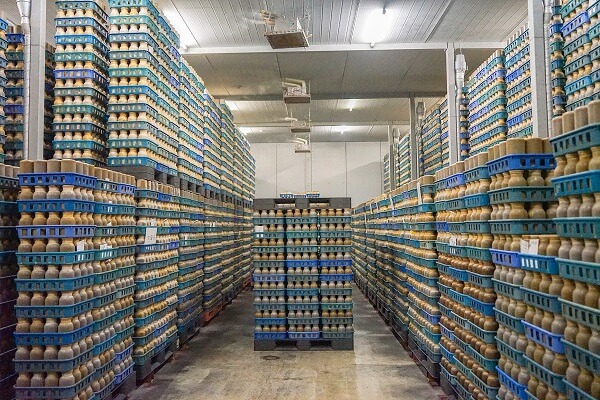
A Farm Tour
After a very frank and productive interview, we got to tour the production facilities. It turned out that the factory we were currently in, was one the company had bought after the original owner went bankrupt. Mr. Hiromatsu explained that he hadn’t needed a facility of this size for his planned expansion, but that the price was just too good and it offered a good chance to purchase excess space and then be able to grow into it.Currently, the facility is mainly used for processing, including the cutting, sorting and also freezing of mushrooms for commercial sale, as well as being the company’s logistics hub for shipping, with its big parking lot and easy access to the main thoroughfares of Chikugo City. Due to sanitary reasons, we couldn’t tour the inside of the packing and processing facility, which is inside a set of prefabricated rooms inside the cavernous structure of the factory. Mr. Hiromatsu also walked us around and pointed out the wide-open space on the far end, explaining they plan to use it for their next expansions.After leading us outside the main building to a small ancillary structure on the side, Mr. Hiromatsu showed us something very new. I had encountered farms that used spent substrate to breed and sell pet beetles (very popular in Japan, where most urban apartments have limitations on traditional pets and where owning a pet is prohibitively expensive), and which also sell spent substrate for beetles to live in or for their larvae to eat. But what Dream Mush was doing was different. They have partnered up with a wave-making start up called Tomushi, which aims to turn existing waste streams in agriculture and food processing into valuable resources.As a company founded based on a love of rhinoceros beetles and stag beetles, Tomushi has apparently done a great deal of research and breeding on different beetle species to create a system where they can grown larva faster than in nature and work to have continual year-round turnover. Their model is simple: make partnerships with existing mushroom producers, sell the eggs and any necessary materials, then have a contract to buy back the mature larva, which Tomushi dry and mill into a powder or pellets for use as commercial fish feed.Dream Mush is still in the exploratory phase, but are still one of the early adapters and have placed hopes on this new venture to generate additional value out of their spent substrate. A second benefit of raising the beetle larva is that the excrement of the larva have a lower water content, higher nitrogen content, and a lower ash content by volume than the spent mushroom compost (SMC from here on) does. The nitrogen content grew from 1.5% in the SMC to 2.5% in Tomushi’s process, while the ash percentage dropped from 45.5% to 41.8%. After being digested and used to grow larva, the SMC had a C/N ratio of 17.9, which is within the ideal range for soil microbes. Practically speaking, this means the spent substrate that goes through this extended farming process comes out with reduced weight and volume, and is more nitrogen rich. What’s more, having been digested by the beetle larva, the substrate is further broken down and the nutrients and nitrogen are more readily available to plants, making it a better and more effective organic fertilizer than typical spent mushroom substrate for exotic varieties.The ideal system that Dream Mush and other mushroom producers are hoping for, is one where they can produce a second crop, the beetle larva, which get sold off as feed. Even if the prices are very low, the running costs are also minimal (the beetle species in question already have a wide range of temperatures they can live in, so in theory very little climate control is needed for this process, and very little labor), allowing them and other producers to take something that before they had to throw away, and make a small amount of revenue from it. The second part, is that after harvesting the larva through sifts, the larva manure, if you could call it that, would ideally then get bagged or palletized and sold commercially as a probiotic soil amendment with high nitrogen content, whereas most farms are giving away their spent substrate in order to get rid of it.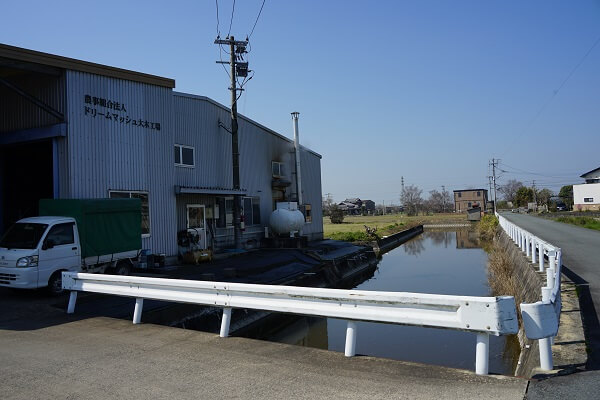
- It’s an interesting solution and I couldn’t help but hope for Tomushi’s system to become a smashing success because it would solve a number of problems at once. For one, a lack of cheap domestically produced protein for animal feed, both for fish, and for poultry and pork production. Secondly, while SMC from exotic varieties is a good soil amendment that can also increase the microbial activity within soil while improving water retention, it has been difficult to sell it for more than a pittance. In Japan, the effect of SMC is simply not prominent enough in terms of crop yields to justify much of a sales price beyond delivery fees and has proven impractical to upcycle as an agricultural product.After we heard about Tomushi, we drove together with Mr. Hiromatsu in his car to their growing facilities in neighboring Oki Town, about a fifteen-minute drive away. The farm sits beside a small neighborhood shrine in an otherwise residential area and he pointed out the limitations for the property that led them to invest in the new facility in Chikugo City: the farm is ringed in on all sides by small man-made canals. These canals used to be used for daily life necessities such as laundry and gardens, and children even swam in them, but beginning in the 1950s, as industrial scale agriculture and large-scale use of fertilizers, herbicides, and pesticides became more common, the water became too dirty and polluted for other uses. I couldn’t help but think, as I looked at the algae-clogged filthy water with plastic bags and water bottles among other garbage floating here and there, if this was the best humanity can do. A lot of people are drawn to the mushroom industry for the same reason; a wonder if we can’t do better; if we can’t provide food affordably and efficiently without environmental degradation?The canals are several meters across and several meters deep, which foreclosed the possibility of even small expansions of that facility (and are also protected, as you would expect, by zoning regulations). The lack of available land around the facility also made it impractical to expand even if the company could work around the other issues. Hence Dream Mush changed gears and bought such a large facility to give them long-term expansion capacity. The original farm itself was compact, well-maintained and fairly typical. We quickly looked over the mixers and the substrate filling machines for the bottles, after which the line automatically caps and palletizes the bottles into pallets of trays. It was just before noon in March, but production was still buzzing as workers were moving shelves of bottles around on forklifts or cleaning up the bottle-filling equipment at the end of the batch.The most surprising thing wasn’t the systems, which were standard, but to hear from Mr. Hiromatsu that for most of the past decade he’s completely phased out foreign guest workers. It was the first farm I’ve ever been to with more than 50 workers without a single foreign guest worker, usually Vietnamese. He told me that they used to use a large number of foreign guest workers, but that at a certain point he decided he wanted to focus on local economic stimulation and slowly phased them out. It was challenging and took time, but now the company uses all local workers, which includes their participation in an initiative to provide employment opportunities for local residents with disabilities who otherwise struggle to find stable employment in Japan.On the whole, he said, it’s only slightly more expensive to employ all domestic workers, (accounting for the fees smaller companies like his have to pay to scouting companies that handle the recruiting and paperwork for bringing in foreign guest workers) but the management of staff has become vastly easier. Dream Mush, of course, is lucky, as they aren’t located in an isolated rural mountain town but rather in a densely populated region near Fukuoka City, as many Japanese farms use foreign guest workers less to save money and more because they can’t find sufficient labor otherwise.
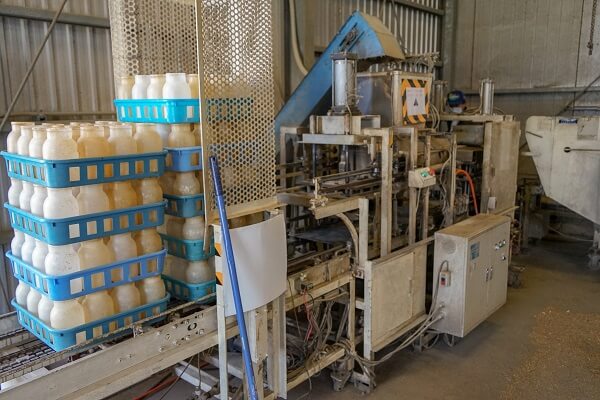 Mr. Hiromatsu was clear that he could grow more Hakata sugitake, and he could aggressively expand that market, but he just doesn’t see the point of it. The sales point depends on the rarity and unusualness of the variety. And if he did build the market up, a much larger producer would probably just jump in, copy him, and churn out large quantities until the variety lost its luster, prices collapsed, and it was just another random mushroom at supermarkets. This is, quite literally, the process that happened in Japan with shimeji, maitake, and eryngii mushrooms. Even the history of enoki is quite similar. Dream Mush has taken a resoundingly different strategy. They are happy keeping production relatively limited, and to focus on high-return B2B sales that capitalize on the branding and novelty, rather than the consumer mass market.The tour through the main factory farm mostly consisted of me battling my digital camera’s settings and trying to get the focus and exposure time right to capture machinery and mushrooms in a variety of different lightings, different angles, and different distances.In the farm, Mr. Hiromatsu showed me both the main shimeji production, and trays of shimeji were set aside because he was in the process of testing new strains, something he says he does regularly to maintain yield and coloration. Entering the room for Hakata sugitaki it was clear that this is a low yield variety of mushroom, especially for bottle systems. There was simply no density and the mushrooms did not form the solid clusters typical of similar shaped mushrooms such as shimeji and their cousins, nameko. Instead they grew in a breezy, my-pace manner loose enough to slump about the bottles. Even getting each bottle to grow to a relatively consistent height took a great deal of specialized care to the growing parameters in each room, or so Mr. Hiromatsu explained. It is because the variety is so finnicky, and it requires a very attentive hand that he is not too concerned about large-scale growers jumping in to pump and dump it like they have done for many other promising varieties of mushroom.He showed us a tray of bottles that hadn’t turned out well; the stems were on average short and the length of the fruiting bodies was all over the place. Then he showed us a tray that had turned out well. Even very good yields for the variety were around 120 grams per bottle, for the same bottles that, with shimeji, could yield nearly 200 grams per bottle. It began to fall into place for me as I saw that Pholiota adiposa, rather than being a cash cow, was more a piece of window dressing. Not the bread and butter of Dream Mush, but a rare and unique variety that helped them to stand out and advertise themselves, while also giving their products a more premium and high-end veneer. That’s why, even though it is difficult to grow with bottle systems and even though in Japan almost no variety of artificially cultivated mushroom can fetch premium prices, the company continues to produce a large amount of chestnut mushrooms and to maintain that market.The farm equipment was all fairly standard, and the growing rooms were very clear and well-organized. I again had the thought that after visiting a few dozen farms, that the nuts and bolts of a mushroom operation are relatively predictable in a way that the business strategies and character of the companies are not. As this series is more focused on the human face and the different factors that go into running a mushroom farm as a business, I tend to focus on that, which also makes farms more comfortable showing me around (because I’m not copying down their humidity settings and exact incubation times in a little notebook as I go around). I also don’t want decontextualized information about farm practices that generally have specific local economic and environmental factors to be uncritically applied by readers.After finishing our tour, we had a lovely lunch in neighboring Yanagawa Town, an idyllic scenic Japanese town famed for its historic canals (the town is also known as “the Venice of Kyushu”) and its local specialty: roasted eel. Mr. Hiromatsu joked that we’d come half-way across the country, so he wanted to show us a pretty area and for us to enjoy one of the local specialties. Altogether we started at 10 AM, and finished up around 2:30 in the afternoon, and he was gracious enough to accompany us the entire time and even treat us to some of the best eel I have ever eaten in my time in Japan. Dream Mush left an impression on me for its smooth business strategy and the exceptional graciousness that I’ve come to see as a unique trait of Kyushu.
Mr. Hiromatsu was clear that he could grow more Hakata sugitake, and he could aggressively expand that market, but he just doesn’t see the point of it. The sales point depends on the rarity and unusualness of the variety. And if he did build the market up, a much larger producer would probably just jump in, copy him, and churn out large quantities until the variety lost its luster, prices collapsed, and it was just another random mushroom at supermarkets. This is, quite literally, the process that happened in Japan with shimeji, maitake, and eryngii mushrooms. Even the history of enoki is quite similar. Dream Mush has taken a resoundingly different strategy. They are happy keeping production relatively limited, and to focus on high-return B2B sales that capitalize on the branding and novelty, rather than the consumer mass market.The tour through the main factory farm mostly consisted of me battling my digital camera’s settings and trying to get the focus and exposure time right to capture machinery and mushrooms in a variety of different lightings, different angles, and different distances.In the farm, Mr. Hiromatsu showed me both the main shimeji production, and trays of shimeji were set aside because he was in the process of testing new strains, something he says he does regularly to maintain yield and coloration. Entering the room for Hakata sugitaki it was clear that this is a low yield variety of mushroom, especially for bottle systems. There was simply no density and the mushrooms did not form the solid clusters typical of similar shaped mushrooms such as shimeji and their cousins, nameko. Instead they grew in a breezy, my-pace manner loose enough to slump about the bottles. Even getting each bottle to grow to a relatively consistent height took a great deal of specialized care to the growing parameters in each room, or so Mr. Hiromatsu explained. It is because the variety is so finnicky, and it requires a very attentive hand that he is not too concerned about large-scale growers jumping in to pump and dump it like they have done for many other promising varieties of mushroom.He showed us a tray of bottles that hadn’t turned out well; the stems were on average short and the length of the fruiting bodies was all over the place. Then he showed us a tray that had turned out well. Even very good yields for the variety were around 120 grams per bottle, for the same bottles that, with shimeji, could yield nearly 200 grams per bottle. It began to fall into place for me as I saw that Pholiota adiposa, rather than being a cash cow, was more a piece of window dressing. Not the bread and butter of Dream Mush, but a rare and unique variety that helped them to stand out and advertise themselves, while also giving their products a more premium and high-end veneer. That’s why, even though it is difficult to grow with bottle systems and even though in Japan almost no variety of artificially cultivated mushroom can fetch premium prices, the company continues to produce a large amount of chestnut mushrooms and to maintain that market.The farm equipment was all fairly standard, and the growing rooms were very clear and well-organized. I again had the thought that after visiting a few dozen farms, that the nuts and bolts of a mushroom operation are relatively predictable in a way that the business strategies and character of the companies are not. As this series is more focused on the human face and the different factors that go into running a mushroom farm as a business, I tend to focus on that, which also makes farms more comfortable showing me around (because I’m not copying down their humidity settings and exact incubation times in a little notebook as I go around). I also don’t want decontextualized information about farm practices that generally have specific local economic and environmental factors to be uncritically applied by readers.After finishing our tour, we had a lovely lunch in neighboring Yanagawa Town, an idyllic scenic Japanese town famed for its historic canals (the town is also known as “the Venice of Kyushu”) and its local specialty: roasted eel. Mr. Hiromatsu joked that we’d come half-way across the country, so he wanted to show us a pretty area and for us to enjoy one of the local specialties. Altogether we started at 10 AM, and finished up around 2:30 in the afternoon, and he was gracious enough to accompany us the entire time and even treat us to some of the best eel I have ever eaten in my time in Japan. Dream Mush left an impression on me for its smooth business strategy and the exceptional graciousness that I’ve come to see as a unique trait of Kyushu.- I hope to get a chance to tour more facilities in Kyushu, which between climate and lower consumption rates, is a tough market for mushroom growers and that produces more creativity and more business savvy than I often see in Nagano Prefecture, the heart of Japan’s “mushroom country” where there are extensive existing support networks and it’s a lot easier to run a farm, but grower’s end up becoming completely dependent on incubation centers and distributors, putting them in an unpleasant middle where they have very little space to reduce their costs or increase their profits. This is, in fact, why producers in Japan’s “mushroom country” face some of the narrowest profit margins and oversupply is a recurring issue there. Every region has its own problems, which makes it helpful to study and cross-reference, because, after all, we live in an inter-connected world and shared knowledge is the basis of the modern economy.
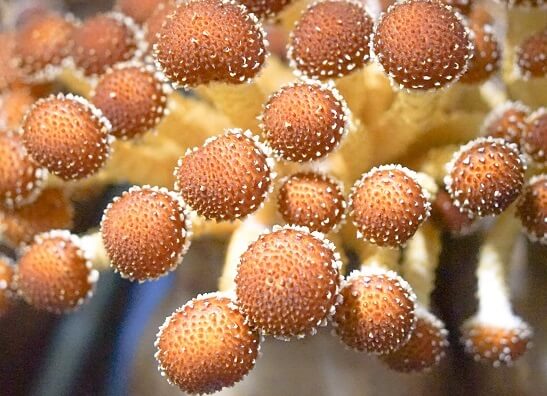

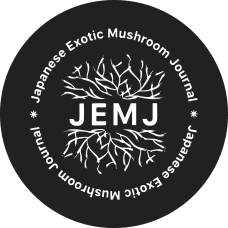



 1-2-13 Honmachi, Komoro city, Nagano prefecture, Japan 384-0026
1-2-13 Honmachi, Komoro city, Nagano prefecture, Japan 384-0026